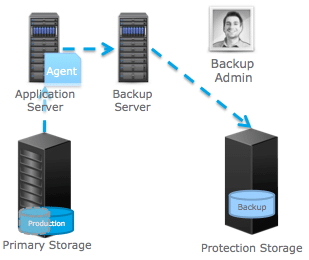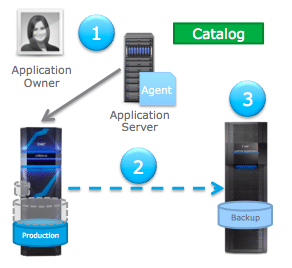![]() Last month EMC hosted a Megalaunch in Londer, announcing their new VMAX family as well as a several other offerings. Though we mentioned ProtectPoint at the time (last paragraph before availability) there wasn’t a tremendous amount of detail at the event. Since then EMC has provided much more on the emerging technology. ProtectPoint is a data protection offering which hopes to bring the benefits of snapshots together with the benefits of backups. By integrating the primary storage with the protection storage, ProtectPoint reduces cost and complexity, increases speed, and maintains recoverability of backups.
Last month EMC hosted a Megalaunch in Londer, announcing their new VMAX family as well as a several other offerings. Though we mentioned ProtectPoint at the time (last paragraph before availability) there wasn’t a tremendous amount of detail at the event. Since then EMC has provided much more on the emerging technology. ProtectPoint is a data protection offering which hopes to bring the benefits of snapshots together with the benefits of backups. By integrating the primary storage with the protection storage, ProtectPoint reduces cost and complexity, increases speed, and maintains recoverability of backups.
Last month EMC hosted a Megalaunch in Londer, announcing their new VMAX family as well as a several other offerings. Though we mentioned ProtectPoint at the time (last paragraph before availability) there wasn’t a tremendous amount of detail at the event. Since then EMC has provided much more on the emerging technology. ProtectPoint is a data protection offering which hopes to bring the benefits of snapshots together with the benefits of backups. By integrating the primary storage with the protection storage, ProtectPoint reduces cost and complexity, increases speed, and maintains recoverability of backups.

Traditional Backup Architecture
In a traditional backup data flows from the primary storage to the application server, then to the backup server before finally landing on the protection storage. This workflow can be very intrusive on the application server. ProtectPoint is far less intrusive by removing the application server and the backup server from the data path. It does this by sending data directly from the primary storage to the Data Domain. Since data doesn’t flow across the application server valuable resources are freed up during the backup window.

Backup with ProtectPoint
ProtectPoint leverages primary storage change block tracking to only send unique blocks to the Data Domain where they are stored as full independent backups. That means every ProtectPoint backup is a full but runs at the speed of an incremental. By leveraging the power of Data Domain application owners have instant access to their backups for quick recovery.
Since ProtectPoint and Data Domain have strong integrations with native utilities, application and database owners have complete control of their own backups. Empowering application owners is a must in the modern workplace.
Availability
ProtectPoint will be available in the fourth quarter of 2014. At GA it will support the VMAX3 family for primary storage, but EMC has hinted that this will change over time. For protection storage ProtectPoint will work with EMC Data Domain DD4500, DD7200, DD990, and possibly the DD890 with a special RPQ. The applications supported out of the gate are limited to Oracle 11g and 12c on AIX, HP, Solaris, and Linux.
About the Author
Mark May is a storage engineer in Cincinnati, OH. He has worked in Enterprise Storage and Backup for over 15 years. He is an EMC Elect, Cisco Champion, and avid technologist. In his free time he likes to help others understand the ins and outs of the ever changing storage industry. He can be found online in a variety of places, but the two most likely are his personal blog and twitter @cincystorage. Adam Armstrong also contributed to this report.

